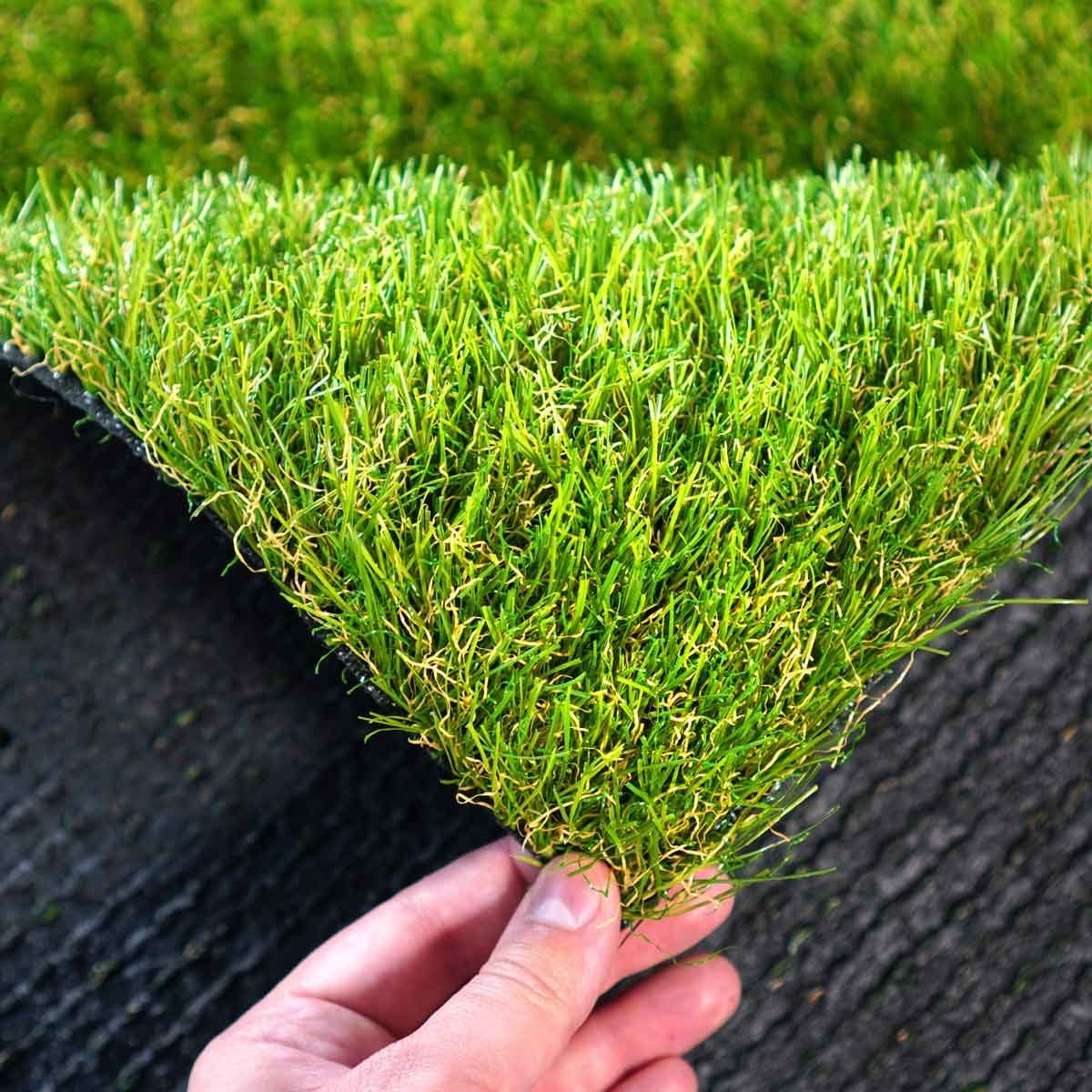Explore the Environmental Perks of Opting for Artificial Grass Solutions
The adoption of fabricated turf options offers an engaging possibility to address pressing environmental obstacles. By significantly decreasing water usage and lessening the application of damaging chemicals, these choices not only promote sustainable landscaping however likewise secure neighborhood ecosystems.
Water Conservation Advantages
One of the most substantial benefits of synthetic turf is its capacity to preserve water. In contrast, artificial lawn does not need watering, considerably decreasing the overall need for water resources.
By getting rid of the need for routine watering, synthetic grass adds to lasting landscape techniques and helps alleviate the ecological impact of extreme water intake. The preservation of water extends to the reduction of overflow, which can lead to soil erosion and waterway contamination.
Furthermore, the installment of synthetic grass permits house owners and municipalities to designate water resources much more efficiently, concentrating on vital usages such as drinking water and farming. The change towards fabricated grass not just advertises accountable water use but additionally aligns with more comprehensive environmental objectives aimed at maintaining all-natural sources.
As communities progressively prioritize sustainability, the water conservation benefits of synthetic grass offer a compelling case for its adoption in commercial and domestic landscaping jobs.
Lowered Chemical Usage
The transition to fabricated lawn substantially decreases the dependence on chemical therapies commonly used in natural yard maintenance. Standard lawn management normally entails the application of plant foods, pesticides, and herbicides to promote development and control bugs. These chemicals can position threats to human wellness, local wild animals, and the environment, adding to soil and water contamination.
In comparison, artificial turf gets rid of the demand for these unsafe substances. By reducing the release of artificial substances right into the ecosystem, synthetic grass advertises much healthier dirt and water systems.
In addition, the lack of chemical runoff related to synthetic grass installations helps safeguard regional rivers from air pollution, supporting marine life and keeping biodiversity. Arizona turf. As neighborhoods significantly focus on sustainable practices, choosing for synthetic grass presents a sensible service that aligns with environmental preservation goals. With this shift, building proprietors can delight in rich eco-friendly spaces without endangering eco-friendly wellness, leading the way for a more lasting future
Reduced Carbon Footprint

Furthermore, the setup of synthetic turf can lead to significant water preservation. Natural grass require significant quantities of water for watering, which not only contributes to the carbon impact connected with water extraction and therapy yet also stress neighborhood water resources. In contrast, synthetic grass requires marginal maintenance, requiring no watering, consequently significantly decreasing water use and its associated energy prices.
In addition, the longevity of synthetic grass adds to its reduced carbon impact. With a life expectancy of as much as 15 years Related Site or even more, the need for frequent replacements is diminished, resulting in much less waste and reduced power usage in production and taking care of traditional turf options. In general, fabricated turf offers a lasting choice for eco conscious landscaping.
Habitat Preservation
Habitat preservation is a vital consideration in the debate over landscaping options, especially when comparing synthetic grass see post to natural grass. All-natural yard lawns usually call for substantial maintenance, consisting of the usage of fertilizers, herbicides, and pesticides, which can adversely influence neighborhood communities. These chemicals can seep into the soil and waterways, damaging native flora and animals and disrupting neighborhood environments.
Artificial turf removes the need for damaging chemicals, consequently safeguarding close-by wild animals and keeping the integrity of surrounding ecological communities. The installment of synthetic turf can lead to the conversion of former yard locations into even more biodiverse landscapes, such as pollinator gardens or indigenous plant areas, which can support neighborhood wild animals.
Eventually, the shift to man-made turf not only saves water and decreases maintenance efforts but likewise cultivates a more unified relationship in between human activities and the natural surroundings, promoting habitat conservation at the same time.
Long-Term Sustainability
Lasting sustainability is a critical consider assessing the advantages of see here man-made grass over conventional lawn yards. Among the most significant advantages of artificial lawn is its toughness; it can last as much as 15-20 years with marginal maintenance, whereas all-natural turf calls for regular reseeding and replacement. This durability reduces the requirement for constant resources, such as water, plant foods, and pesticides, which are crucial for keeping a healthy turf yard.
Furthermore, fabricated grass adds to a reduction in carbon discharges linked with lawn treatment tools. Conventional grass frequently need gas-powered lawn mowers, leaners, and blowers, all of which add to air contamination. Phoenix turf companies. On the other hand, synthetic grass removes the demand for such equipment, promoting a cleaner atmosphere
Additionally, the manufacturing of synthetic grass progressively makes use of recycled products, boosting its sustainability account. As manufacturers adopt eco-friendly practices, the environmental footprint of synthetic grass continues to decrease.

Verdict
The fostering of synthetic grass services offers significant ecological advantages, consisting of considerable water preservation, reduced reliance on unsafe chemicals, and a reduced carbon impact. In addition, synthetic grass help in preserving all-natural environments by decreasing land disruption and promoting long-term sustainability through using sturdy products. Jointly, these aspects highlight the potential of synthetic turf to add positively to ecological health and wellness and provide a viable choice to conventional landscaping methods in a progressively resource-conscious world.
In comparison, synthetic lawn does not need watering, significantly lowering the general need for water resources. By minimizing the launch of synthetic substances right into the environment, artificial grass promotes healthier dirt and water systems.
Additionally, the installment of synthetic lawn can result in considerable water preservation. In contrast, man-made turf requires minimal upkeep, calling for no watering, thus dramatically decreasing water usage and its linked energy costs.
